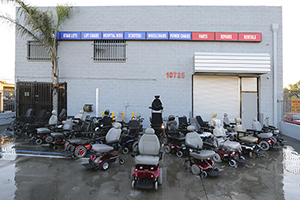Wheelchair Armrests Guide


Wheelchair armrests are one of the taken for granted components of a wheelchair. Almost all wheelchairs, both manual and power, come with or can be fitted with armrests. Many wheelchair users consider them only a resting place for their arms. In fact, the wheelchair armrests play a much greater role than that.
The extent of armrest usefulness is often dependent on the degree of upper body balance and control, and upper extremity function that the wheelchair user may have. The greater the upper body control and balance, the less dependent the user is likely to be on the armrests. Some people who have good upper body control or have developed effective in-chair balancing techniques remove the armrests completely and use the wheels or seat frame when extra support or balance is needed. While others, who have no grasp or limited hand use will lock their elbow or wrist around a part of the wheelchair armrest for support and stability.
Safety
- Helps contain the user in the wheelchair.
- Armrests aid in stability when reaching or when picking things up from the floor.
- On uneven terrain or hills, the wheelchair armrests can be used to balance and stabilize the user.
- They serve to stabilize the user during sudden stops or on sharp turns.
Pressure Reduction
- Armrests can serve as push off points when doing pressure relieving weight lifts (lifting the body to reduce pressure). They can also act as stabilizers when doing pressure relieving weight shifts (shifting the body to one side or bending forward to reduce pressure).
- Bearing normal weight on the armrests while seated will help un-weigh the pelvis and reduce or redirect the forces that lead to pressure sores.
- Placing the weight of the arms on the armrests will reduce some of the pressure on the spine and aid in preserving and improving posture, maintaining the integrity of the spine and of the intervertebral discs and spaces.
Positioning and Function
- Repositioning within the wheelchair may require the use of the armrests.
- Wheelchair users often prefer positions other than the classic upright seated position. This may be for purposes of resting, pain and pressure relief, or general comfort. In these instances wheelchair armrests may be required in order to obtain and maintain these positions.
- Armrests may be used to gain improved positioning for accomplishing tasks, or as a balance assist when performing tasks or activities that require being outside of the wheelchair users controllable balance range.
- Many wheelchair users require the armrests in order to safely perform transfers in and out of a wheelchair. Individuals who can stand also use the armrests for support when getting in and out of the wheelchair.
- Properly fitted armrests when used help in maintaining a correct and a functional seated posture.
- Armrests may make it difficult to get close to or under tables and desks.
As with any wheelchair part or component, there are occasional drawbacks to use. Wheelchair armrests will certainly add weight and complexity to the wheelchair. Depending on the type of armrest the added weight may be considerable. Many armrests have moveable parts that allow for height adjustment, swinging away, flipping back, and removal. These parts tend to wear out or become damaged making the feature impossible to utilize. Particularly susceptible to this are the locking pins and tension tabs that facilitate armrest height adjustment and the ones that lock the armrest to the wheelchair. These pins often break loose, become bent, or wear out from use rendering the feature useless.
Aside from the potential weight and mechanical issues, wheelchair armrests may also at times interfere with wheelchair propulsion. Armrests can make the wheels more difficult to reach if a user has an overly wide wheelchair or has limited ability to reach. In these cases the user is forced to reach further outward and over the armrests and cannot approach the wheels from the proper pushing angle or utilize the proper upper extremity dynamics for efficient wheelchair propulsion. This results in greater energy expenditure in propelling the wheelchair, and an increase in the potential for injury to the upper extremities.
As may be expected, the wheelchair industry has developed a number of different armrest styles. Most wheelchairs sold today, except for the lower end models, will accept a number of different type armrests. The choice of armrest type is most often based on a combination of the wheelchair user's scope of activities, level of function, environment, special needs, and user preference.
Our service area covers most of Southern California including Los Angeles and surrounding cities.
To see a full list of cities covered in our service area please click here.
- Agoura Hills
- Alhambra
- Altadena
- Arcadia
- Arleta
- Artesia
- Avalon
- Azusa
- Baldwin Park
- Bel Air
- Bell
- Bell Gardens
- Bellflower
- Beverly Hills
- Bradbury
- Brentwood
- Burbank
- Cahuenga Pass
- Calabasas
- Camarillo
- Canoga Park
- Carson
- Cerritos
- Chatsworth
- Claremont
- Commerce
- Compton
- Covina
- Cudahy
- Culver City
- Diamond Bar
- Downey
- Duarte
- Eagle Rock
- El Monte
- El Segundo
- Encino
- Gardena
- Glendale
- Glendora
- Granada Hills
- Hawaiian Gardens
- Hawthorne
- Hermosa Beach
- Hidden Hills
- Huntington Park
- Industry
- Inglewood
- Irwindale
- Kagel Canyon
- La Canada
- La Crescenta
- La Habra Heights
- La Mirada
- La Puente
- La Tuna Canyon
- La Verne
- Lake Balboa
- Lake View Terrace
- Lakewood
- Lancaster
- Lawndale
- Lomita
- Long Beach
- Los Angeles
- Lynwood
- Malibu
- Manhattan Beach
- Marina Del Rey
- Maywood
- Mission Hills
- Monrovia
- Montebello
- Monterey Park
- Montrose
- NoHo Arts District
- North Hills
- North Hollywood
- Northridge
- Norwalk
- Oak Park
- Olive View
- Oxnard
- Pacific Palisades
- Pacoima
- Palmdale
- Palos Verdes
- Panorama City
- Paramount
- Pasadena
- Pico Rivera
- Pomona
- Porter Ranch
- Redondo Beach
- Reseda
- Rolling Hills
- Rosemead
- San Dimas
- San Fernando
- San Gabriel
- San Marino
- Santa Barbara
- Santa Clarita
- Santa Fe Springs
- Santa Monica
- Sepulveda
- Shadow Hills
- Sherman Oaks
- Sierra Madre
- Signal Hill
- Simi Valley
- South El Monte
- South Gate
- South Pasadena
- Stonehurst
- Studio City
- Sun Valley
- Sunland
- Sylmar
- Tarzana
- Temple City
- Thousand Oaks
- Toluca Lake
- Toluca Woods
- Topanga
- Torrance
- Tujunga
- Valencia
- Valley Glen
- Valley Village
- Van Nuys
- Ventura
- Vernon
- Walnut
- Warner Center
- West Covina
- West Hills
- West Hollywood
- West Toluca
- Westlake Village
- Westwood
- Whittier
- Winnetka
- Woodland Hills




 Accreditation Commission for Health Care
Accreditation Commission for Health Care
 RESNA Accredited
RESNA Accredited





